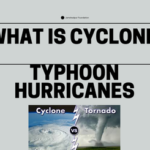El Nino set to return in 2023: Basics Explained

Weather phenomenon El Nino is returning after three years and is set to impact temperatures across the globe in 2023 and will cause global temperatures to rise “off the chart” and deliver unprecedented heatwaves, scientists have warned.
Early forecasts suggest El Nino will return later in 2023, exacerbating extreme weather around the globe and making it “very likely” the world will exceed 1.5C of warming. The hottest year in recorded history, 2016, was driven by a major El Nino.
LEARNING WITH TIMES/AT HOME/WITHOUT CLASSES
On the Earth’s surface, there are asymmetries of land and Ocean. The differential heating of land and Ocean cause variations in the intensity of the annual oscillation of the thermal equator and hence regional variations in the intensity of monsoon.
EI NINO
The oceanic atmospheric phenomenon where in water in the equatorial Pacific warm up abnormally due to weakening of trade winds is termed as El Nino. El Nino, means ‘little boy’ in Spanish. It is a weather system which re-emerges after a gap of about two to five years in the Pacific Ocean and its effects last for about 12 months on an average.
El Nino leads to warming of sea surface temperatures, which in turn affects wind patterns and triggers both floods and droughts in different parts of the world. After this, cold waters do not rise to the surface and coastal waters become unusually warm.
The warm water has a devastating impact on fishing crops and results in extremely higher than average amounts of rainfall. El Nino may also cause severe droughts over Australia, Indonesia, and parts of southern Asia. It also increases the chances of cyclones and typhoons in the Pacific.
El NINO AND INDIAN MONSOON
This phenomenon affects rainfall in India during the Monsoon months. Trade winds normally blow westward from South America towards Asia during Indian monsoon months. Warming of the Pacific results in weakening of these winds. Moisture and the heat content thereby, gets limited and results in reduction and uneven distribution of rainfall across the Indian sub-continent.
LA NINA
La Nina means The Little Girl in Spanish. La Nina is also sometimes called “a cold event.”La Nina episodes represent periods of below-average sea surface temperatures across the east-central Equatorial Pacific. Global climate La Nina impacts tend to be opposite those of El Nino impacts.
El Nino and La Nina are opposite phases of what is known as the El Nino-Southern Oscillation (ENSO) cycle.




0 Comments